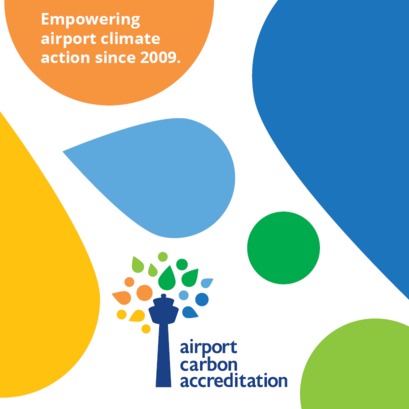
Cost to Regional Queensland of Brisbane Caps & Curfew
- 2023-10-15
- Forecast of 16,414 jobs slashed in regional Queensland
- Regional economic activity would be reduced by $1.5 billion
- Impact on airfares revealed for the for the first time
New economic modelling has laid bare the dire cost to regional Queensland if flights caps and a curfew were introduced at Brisbane Airport, as legislation enters Federal Parliament next week.
An estimated 16,414 jobs would be lost in key regional communities when the flight caps hit hardest. Regional economic activity would be slashed by $1.5 billion as flight caps force the cancellation of thousands of flights connecting Queensland’s capital and the regions.
In 2022-23, five million people travelled to and from Brisbane Airport and regional Queensland, with an average of 159 flights a day.
If a curfew and flight caps of 45 movements per hour were introduced at Brisbane Airport, the loss in regional connectivity would be severe with 3,100 fewer regional Queensland flights and 239,000 reduced passenger movements in FY26.
This loss would rise to 11,200 flights and 915,600 passengers by FY32 – compromising travel to and from the regions during the Olympics.
It would then increase to 32,500 lost flights and 2.9 million fewer passengers by FY42 as capacity at Brisbane Airport was restricted and failed to meet rising population growth and demand for services.
Consequences for passengers would include cancelled flights, flight delays, inconvenient flight times, and increased ticket prices.
Modelling by respected economist Nick Behrens of Queensland Economic Advocacy Solutions analysed the impact this loss of connectivity would have on Queensland communities reliant on Brisbane Airport for tourism, essential deliveries and the exports of their goods.
Analysis confirms that a curfew and hourly flight capping (to 45 movements) would stifle regional economic growth as a result of a substantial loss of regional passenger and freight flights that in turn costs tourism, businesses, jobs, exports and impacts to the broader community.
Cairns would be hardest hit when the impact peaks with almost 3,989 jobs slashed, followed by Townsville with 2,863 job losses. Mackay would lose 2,468 jobs and Rockhampton 1,570.
The reduction in regional Queensland employment is forecast at:
- 3,525 regional jobs by 2025-26;
- 6,905 jobs by 2031-32; and
- 16,414 regional jobs by 2041-42.
Employment Losses by Major Queensland Cities and Towns (persons)

"This proves that capping flights at Brisbane Airport caps Queensland’s prosperity. This would have a catastrophic impact on jobs in regional cities and towns across Queensland because tourists can’t get in, and exports can’t get out," according to Stephen Beckett, Head of Public Affairs at Brisbane Airport.
"This would be devastating for Queensland tourism. 75% of international tourists to Queensland arrive via Brisbane Airport, and the loss of thousands of flights to regional Queensland would restrict the flow of visitors.
"We know when Brisbane Airport is busy, Queensland is busy. If you cap Brisbane Airport, it is a cap on Queensland jobs.
"But it's not just tourism. Regional Queensland relies on flights for the delivery of parts and critical supplies, as well as the exports of their goods. The impact of flight caps would be felt hard from Moranbah to Mt Isa."
Many regional Queensland communities do not currently have any substitute for the services provided by Brisbane Airport. Moranbah, Emerald, Miles and Biloela rely solely on BNE for air access.
Economic activity in key regional Queensland centres would be reduced, including a forecast annual reduction of $376 million in Cairns, $270 million drop in activity in Townsville and $232 million fall in Mackay.
The reduction in regional Queensland Gross Regional Product (GRP) each year is modelled at:
- $335 loss million by 2025-26;
- $655 loss million by 2031-32;
- 1,549 loss million by 2041-42
Annual Economic Losses by Major Queensland Cities and Towns ($ millions – 2023 dollars)

Previous modelling estimated the statewide loss to the Queensland economy to be $2.8 billion by 2031/2032 with the loss of 30,000 jobs.
Impact on ticket prices
The new economic analysis for the first time examined what impact cutting thousands of flights between Brisbane and regional Queensland would have on ticket prices, under a 45 movements per hour flight cap.
By the time the Olympic and Paralympic Games arrive in 2032, the additional increase in regional airfares for a return flight (on top of normal increases) would be $102.88. Then as capacity at Brisbane Airport failed to match population growth, the cost of a return ticket would be hit by an additional $465.72 in 2042 in today's dollars.
"That would mean the cost for a mum and dad with two kids to fly between Brisbane to Cairns would be almost two thousand dollars higher than it would be without a cap. Whether that’s for a holiday to the Great Barrier Reef, or an essential flight for a hospital stay, this is a huge blow for Queenslanders attempting to travel."
"There are better ways to deal with aircraft noise than imposing a cap on the hourly movement of aircraft which would return Brisbane Airport to less capacity than when it had a single runway.
Airservices Australia, the Commonwealth agency responsible for flight path design and air traffic control, is finalising a range of changes to which aims to deliver more flights over Moreton Bay.
Brisbane Airport is also working with its airline partners on a range of initiative including the introduction of next generation quieter aircraft, and measures to boost the number of aircraft taking off over Moreton Bay."
Gladstone Mayor Matt Burnett noted the impact it would have on his city and its residents.
"Our community rely heavily on flights to Brisbane for medical appointments, business meetings and for interstate travel. Slashing flights will only drive-up ticket prices for regional Queenslanders."
Key Findings
Consequences for Passengers:
- Fewer services
- Cancelled flights
- Flight delays
- Inconvenient domestic flight times
- Traveller inconvenience at terminals
- Reduced connectivity to Regional Queensland
- Increased cost of airfares
Consequences for the economy:
- Decreased tourism
- Decreased ability to send freight overnight both interstate and intrastate
- Decreased export opportunity
- Higher business and freight costs
- Resources sector disruption
- Decreased Productivity
Analysis has been prepared by QEAS for BAC through step process including establishment of passenger and flight forecasts, estimation of impact of cap and curfew on these forecasts and modelling of subsequent per passenger economic and employment impacts of these losses.
- CATEGORY
- COUNTRY / AREA
- Australia
- AUTHOR
- Brisbane Airport Corporation









